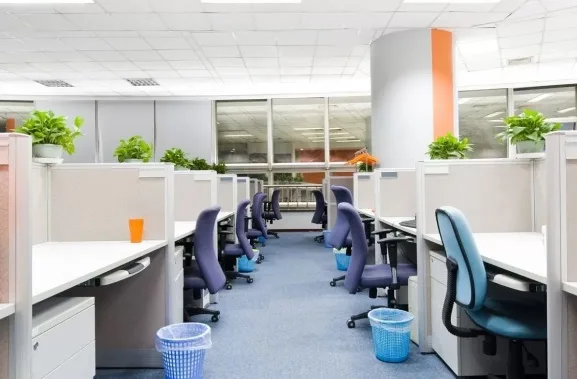A clean and well-maintained office space is not only a reflection of your company’s professionalism but also essential for the health and productivity of your employees. Regular cleaning and maintenance are vital, but a deeper clean is sometimes necessary to ensure that your office environment remains pristine. This article will explore the importance of deep cleaning your office and provide a comprehensive guide to the process.
The Importance of Deep Cleaning:
Deep cleaning goes beyond the routine maintenance and surface cleaning you perform daily or weekly. It involves thoroughly and systematically cleaning areas and items that are often overlooked, resulting in a healthier and more appealing workspace. Here’s why deep cleaning is crucial:
- Health and Well-being
- Productivity
- Image and Reputation
- Maintenance and Longevity
The Comprehensive Guide to Deep Cleaning Your Office:
- Create a Deep Cleaning Plan: Start by outlining a cleaning plan that details the areas and items that need deep cleaning. Identify the frequency of cleaning tasks and assign responsibilities to specific team members or a professional cleaning service.
- Gather Necessary Supplies: Ensure you have the appropriate cleaning supplies and equipment, including mops, vacuums, steam cleaners, disinfectants, and cleaning solutions. Safety equipment, such as gloves and masks, may also be required.
- Declutter: Before you start deep cleaning, declutter your workspace. Remove unnecessary items, paperwork, and clutter that may be hiding dirt and dust. Organize and label items to keep your office tidy and well-maintained.
- Dust and Wipe Down Surfaces: Dust all surfaces, including shelves, cabinets, and office equipment. Wipe down surfaces with a damp cloth and an appropriate cleaning solution, paying attention to light switches, door handles, and shared equipment.
- Clean Carpets and Floors: Deep clean carpets by vacuuming, spot cleaning stains, and using a steam cleaner or carpet cleaning services. Carpet cleaning companies are professionals in this area and will be able to get better results. For hard floors, sweep and mop thoroughly. Pay special attention to high-traffic areas.
- Disinfect Commonly Touched Areas: Disinfect frequently touched surfaces like doorknobs, elevator buttons, and communal kitchen and bathroom fixtures. This step is particularly important for maintaining a healthy environment.
- Clean and Organize Workstations: Empty, clean, and organize desk drawers and workstations. Wipe down computer screens, keyboards, and telephones. Ensure that cables and cords are neatly organized.
- Deep Clean Windows: Wash windows inside and out, and clean blinds and curtains. Clean windows provide better natural light and a fresh appearance.
- Refresh Office Furniture: Wipe down and disinfect office furniture, including chairs, desks, and conference tables. Consider professional upholstery cleaning if needed.
- Sanitize Electronics: Use appropriate cleaning solutions to sanitize electronic devices like computer keyboards, mice, and phones. Ensure that all cables and connections are secure.
- Purge Old Documents: Review and declutter old documents and files that are no longer needed. Organize essential paperwork and store it securely.
- Refresh the Break Room and Restrooms: Deep clean and sanitize the break room, including appliances, counters, and tables. In the restrooms, disinfect sinks, toilets, and other fixtures.
- Check Lighting: Replace any burnt-out light bulbs or fluorescent tubes. Clean light fixtures and replace any damaged or missing covers.
- Professional Assistance: Consider hiring a professional cleaning service for a thorough deep clean. They have the expertise, equipment, and chemicals to ensure every nook and cranny is spotless.
Conclusion
Deep cleaning of your office should be done periodically, whether on a quarterly, bi-annual, or annual basis, depending on your specific needs. A well-maintained and thoroughly cleaned office enhances the work environment, boosts employee morale, and ensures a positive first impression for visitors. It’s an investment in your company’s health, productivity, and image.

